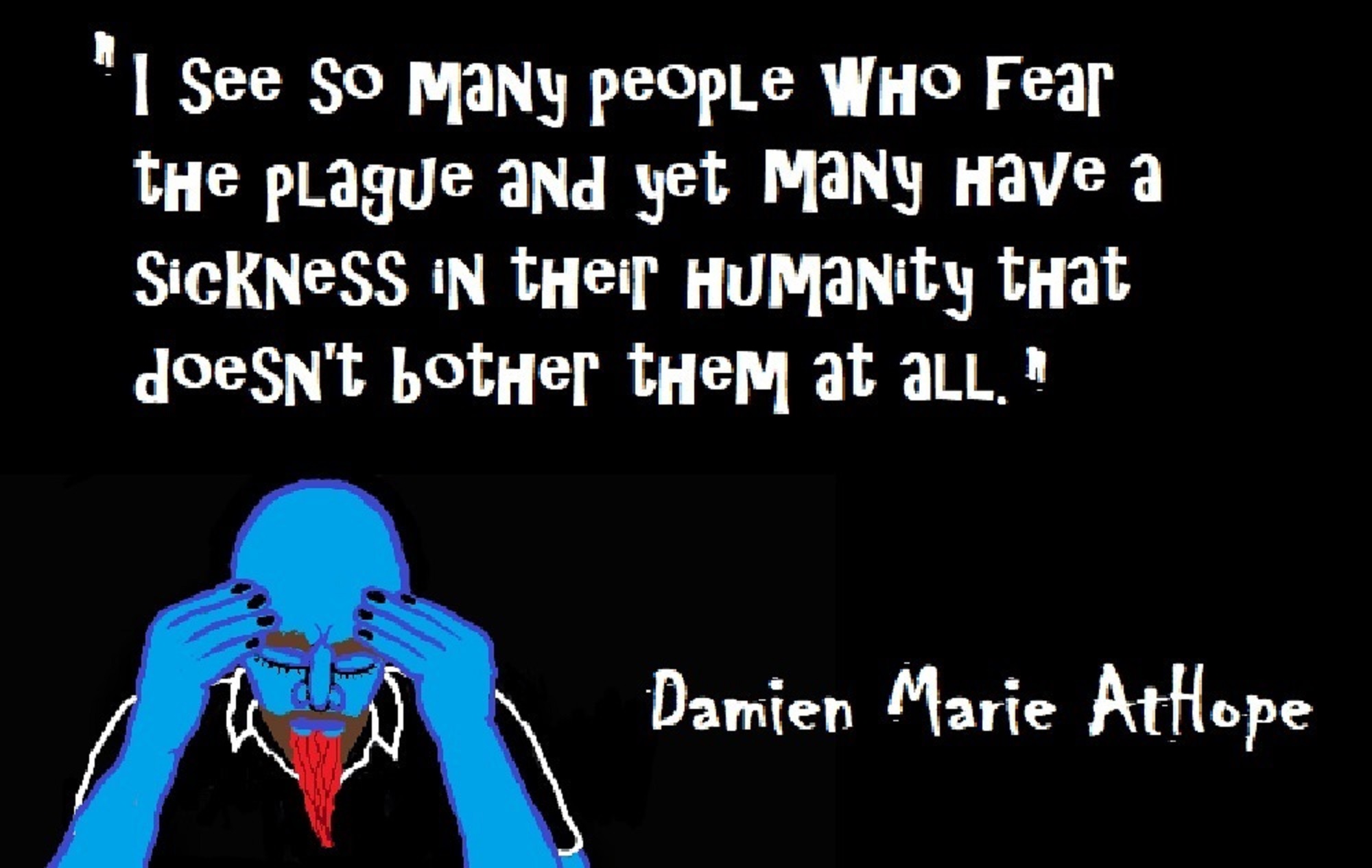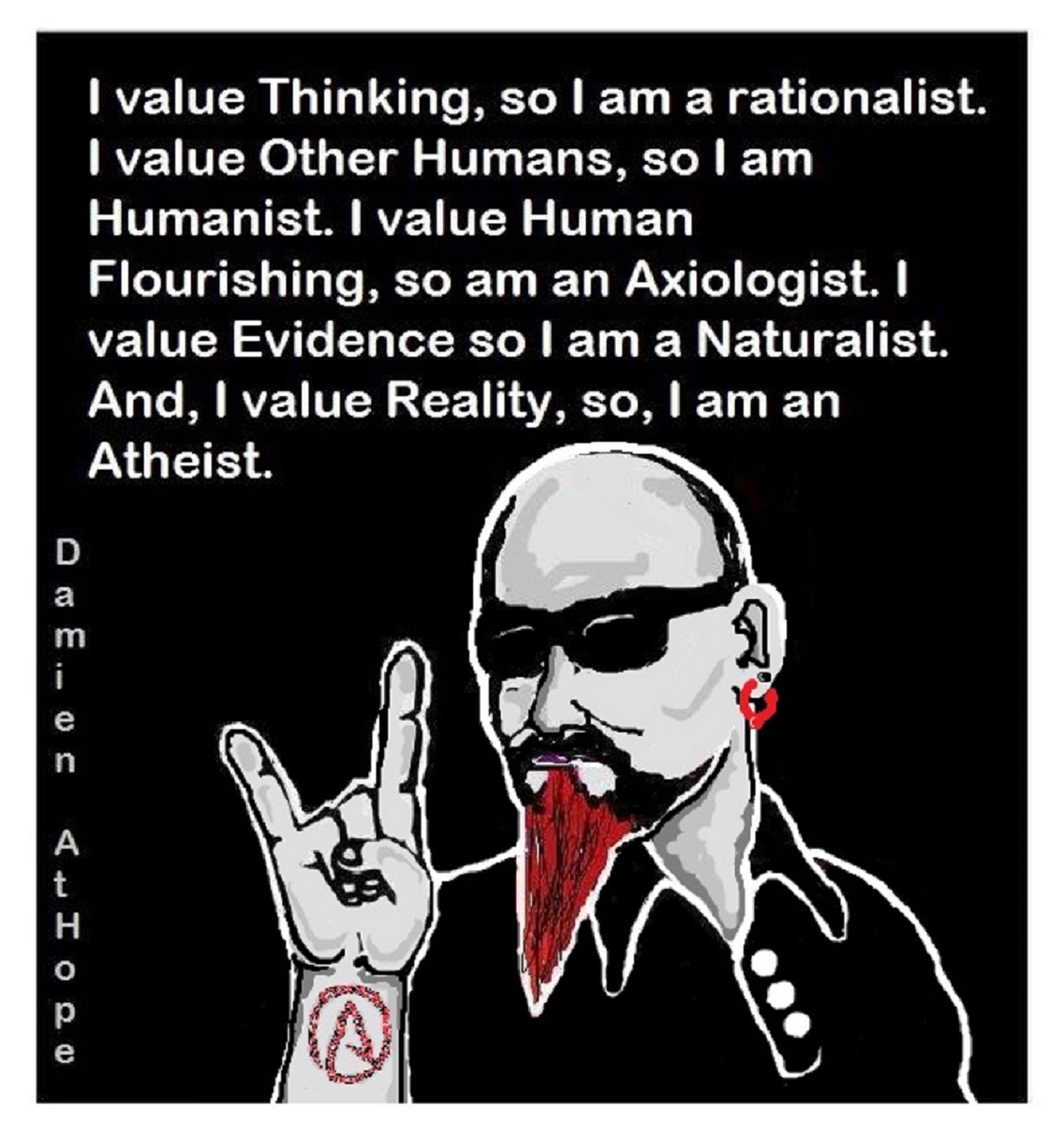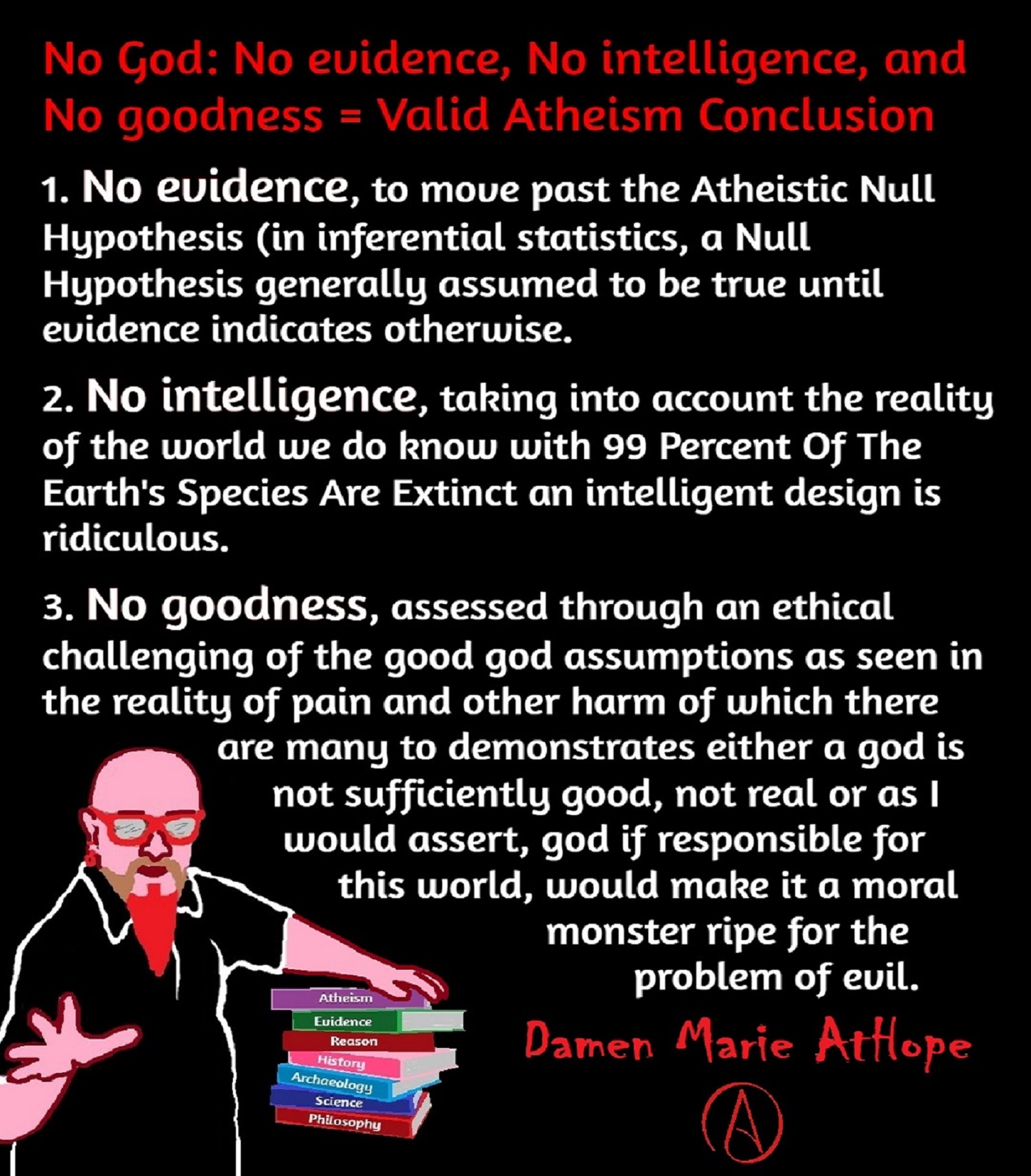Contradicting the Standard Stereotypes of Emotions and Reason
There are certain stereotypes and common misconceptions about the relationship between cognition and affect. For example, it is common for people to say things that imply:
- that their emotions and reason are often in conflict with each other,
- that emotion and reason function independently of each other,
- that it is possible to be an emotional person (and hence do little reasoning),
- that it is possible to be a rational person (and hence experience little emotion)
- that rational persons are cold, mechanical, and lack such desirable traits as compassion and sympathy,
- that emotional persons are lively, energetic, and colorful (though they are poor reasoners or do not follow their reasoning when making decisions),
- In this view one must give up the possibility of a rich emotional life if one decides to become a rational person,
- Likewise, one must give up rationality if one is to live life as a passionate, highly motivated person would.
These ways of talking do not, in my view, make sense of who and what we are. Rather they support a myth that is an albatross on all our thinking about who and what we are. They lead us away from realizing that there is thinking that underlies our emotions and the emotions that drive our thinking. They lead us to think of thought and emotion as if they were oil and water, rather than inseparable constituents of human cognition. They lead us to think that there is nothing we can do to control our emotional life, when in fact there is much we can do. Ref
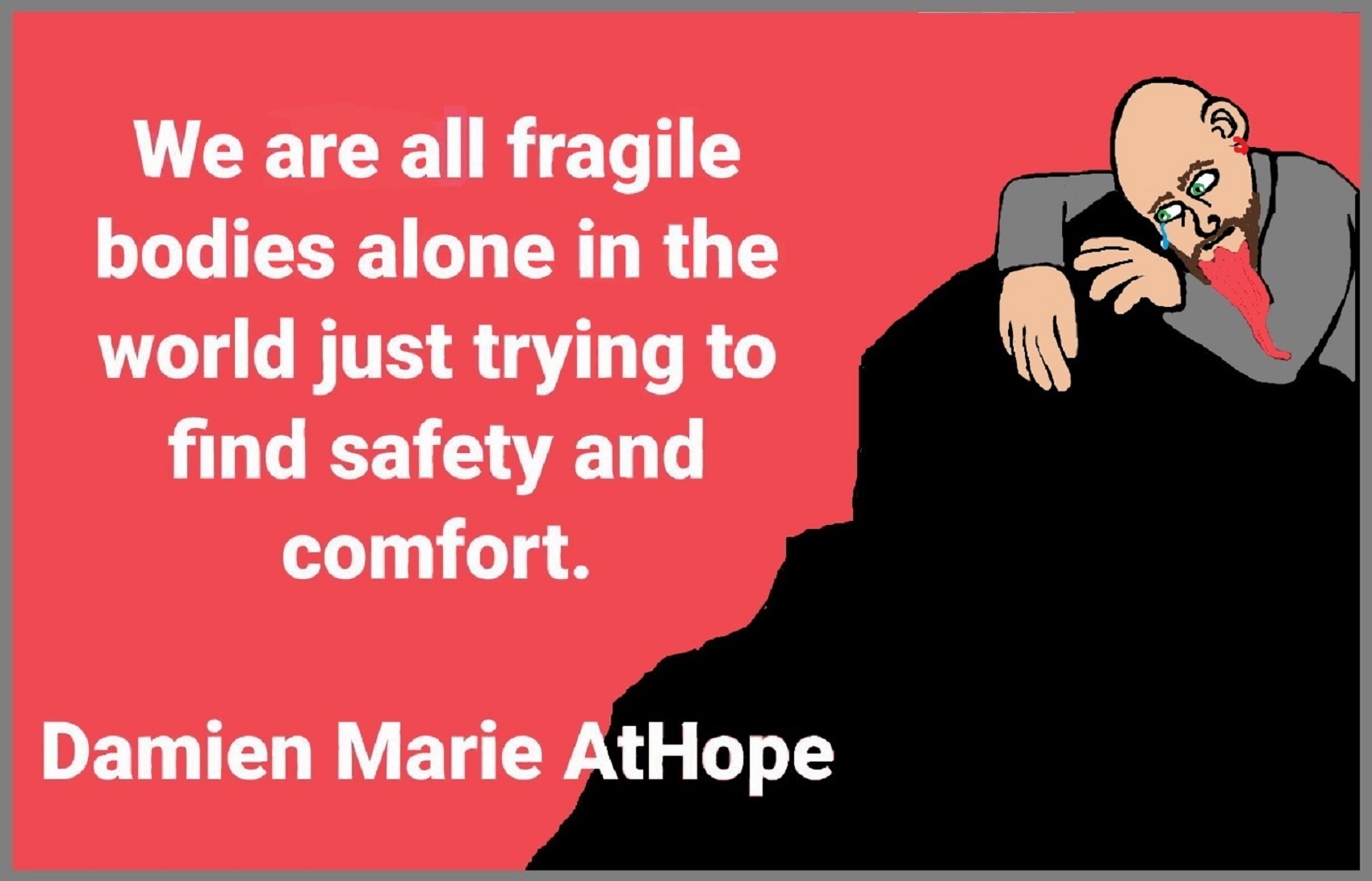
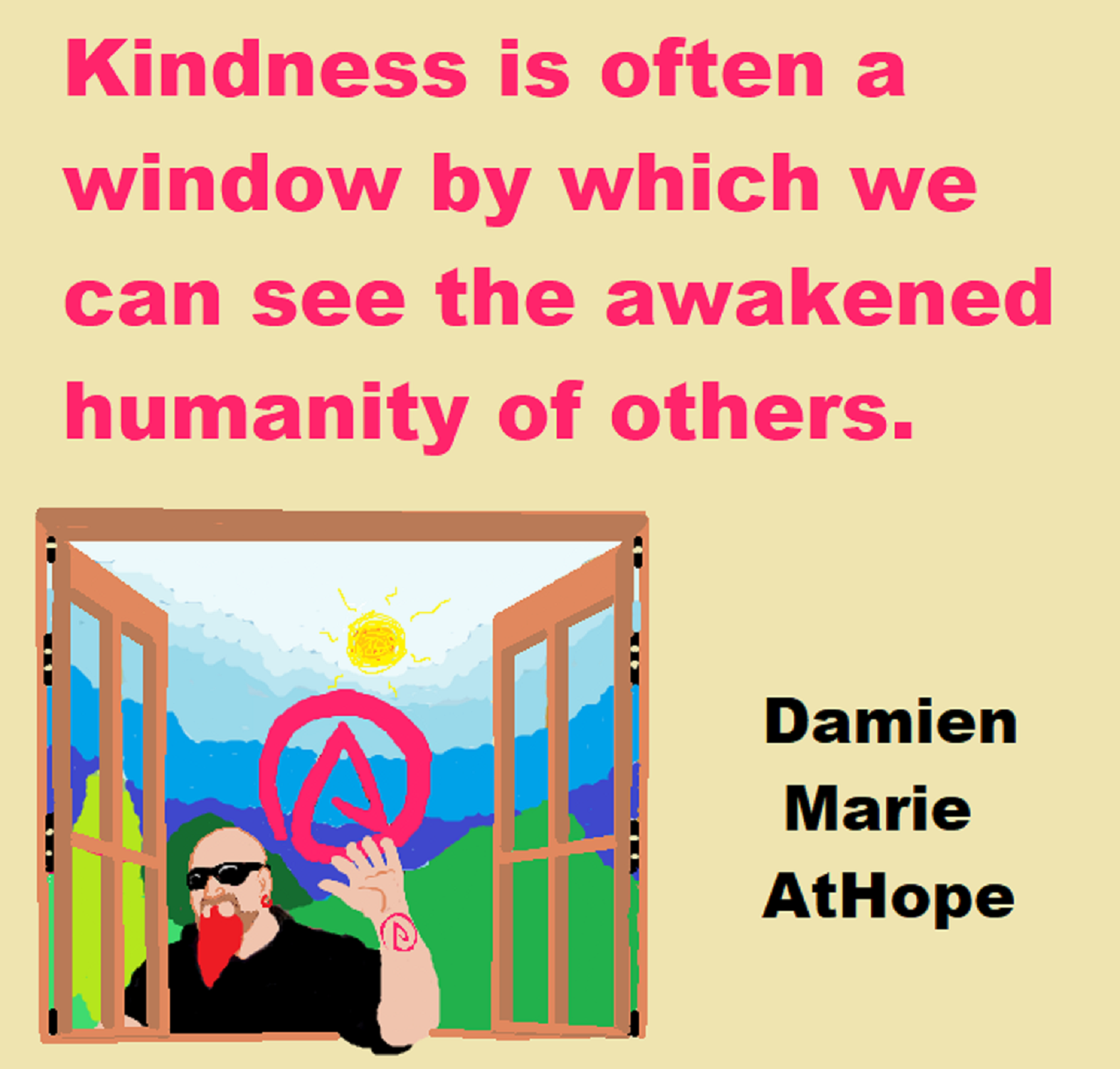
Emotion and Perception: The Role of Affective Information By Jonathan R. Zadra and Gerald L. Clore
Visual perception and emotion are traditionally considered separate domains of study. In this article, however, we review research showing them to be less separable that usually assumed. In fact, emotions routinely affect how and what we see. Fear, for example, can affect low-level visual processes, sad moods can alter susceptibility to visual illusions, and goal-directed desires can change the apparent size of goal-relevant objects. In addition, the layout of the physical environment, including the apparent steepness of a hill and the distance to the ground from a balcony can both be affected by emotional states. We propose that emotions provide embodied information about the costs and benefits of anticipated action, information that can be used automatically and immediately, circumventing the need for cogitating on the possible consequences of potential actions. Emotions thus provide a strong motivating influence on how the environment is perceived. Ref
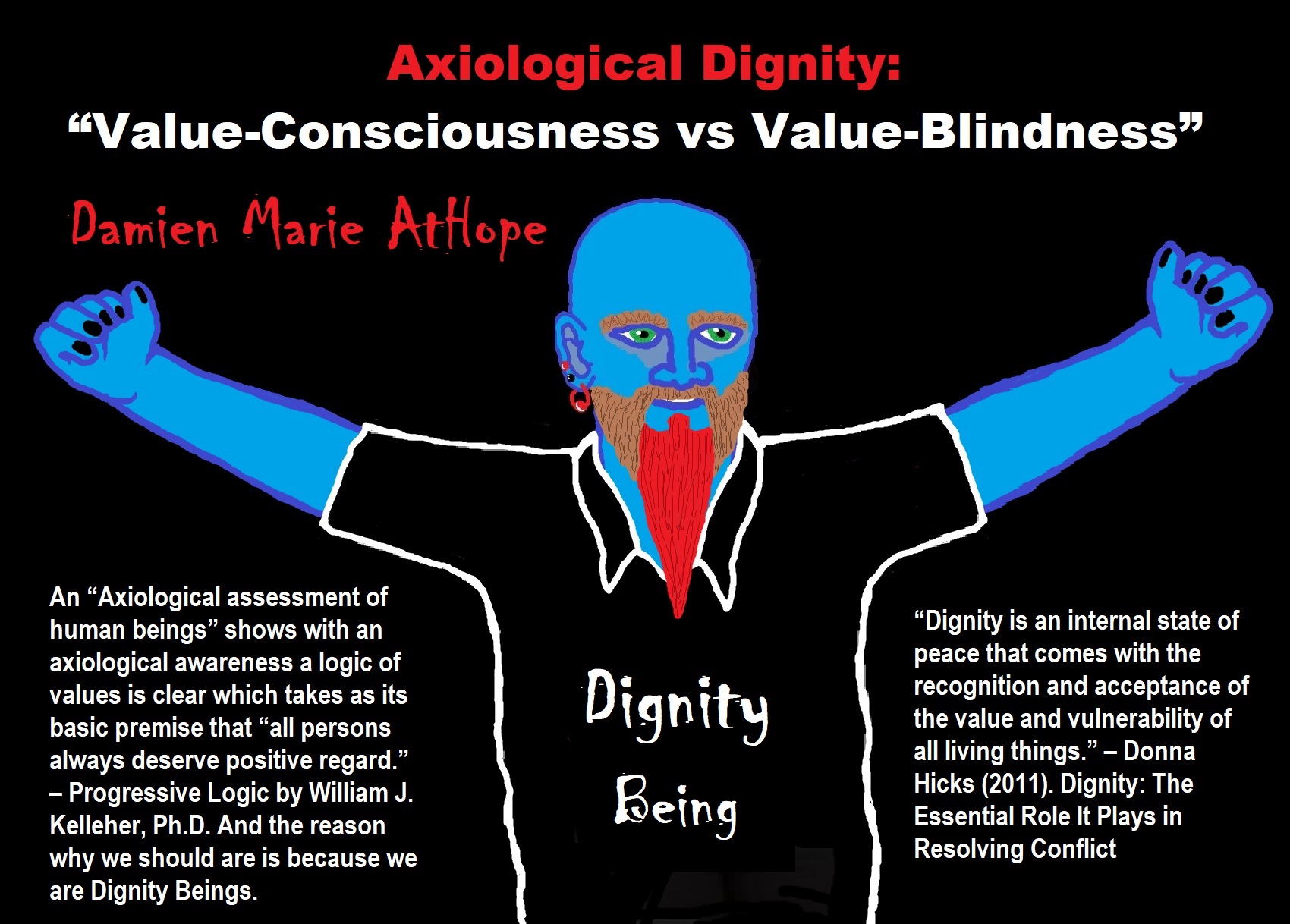
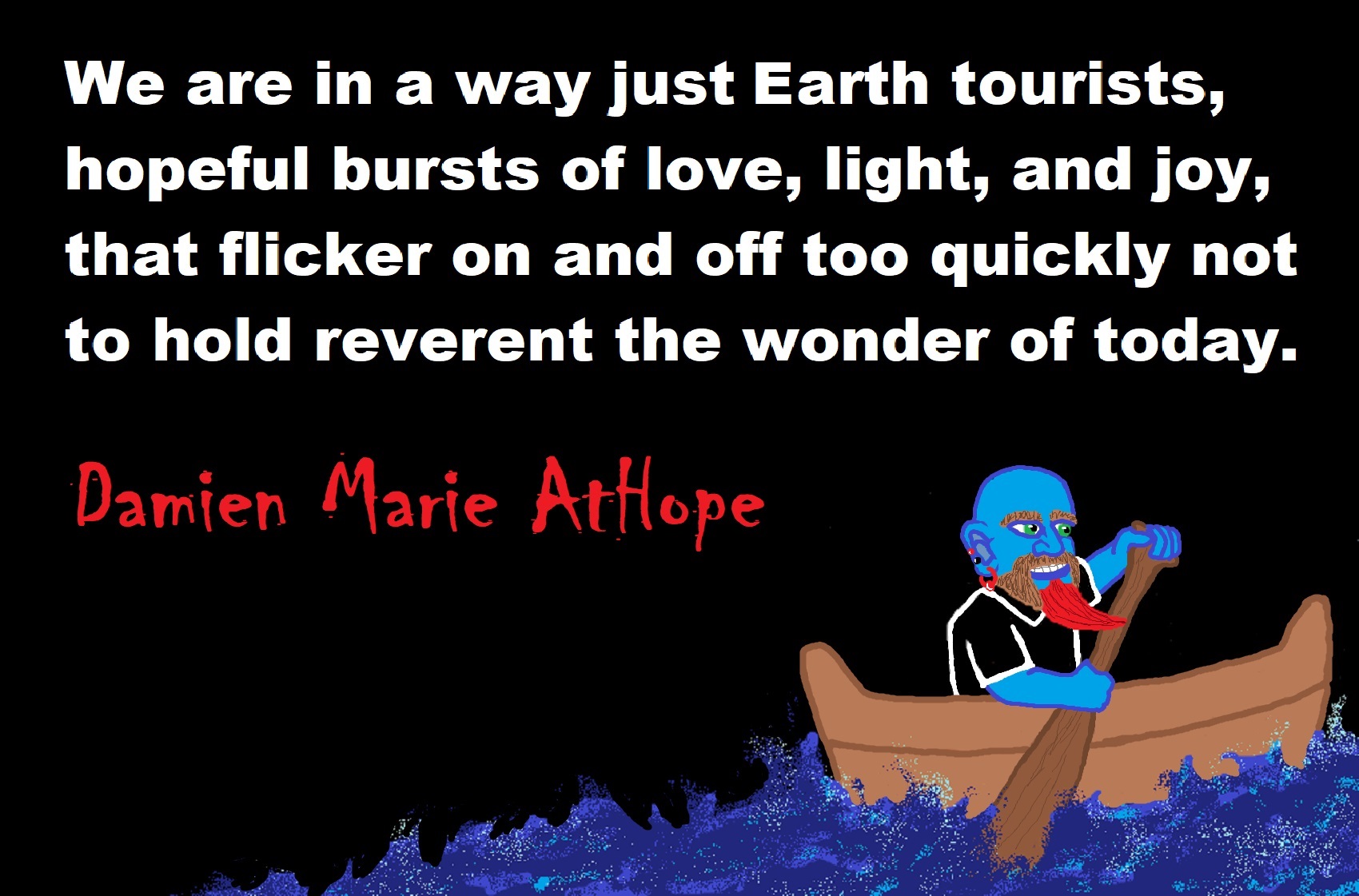
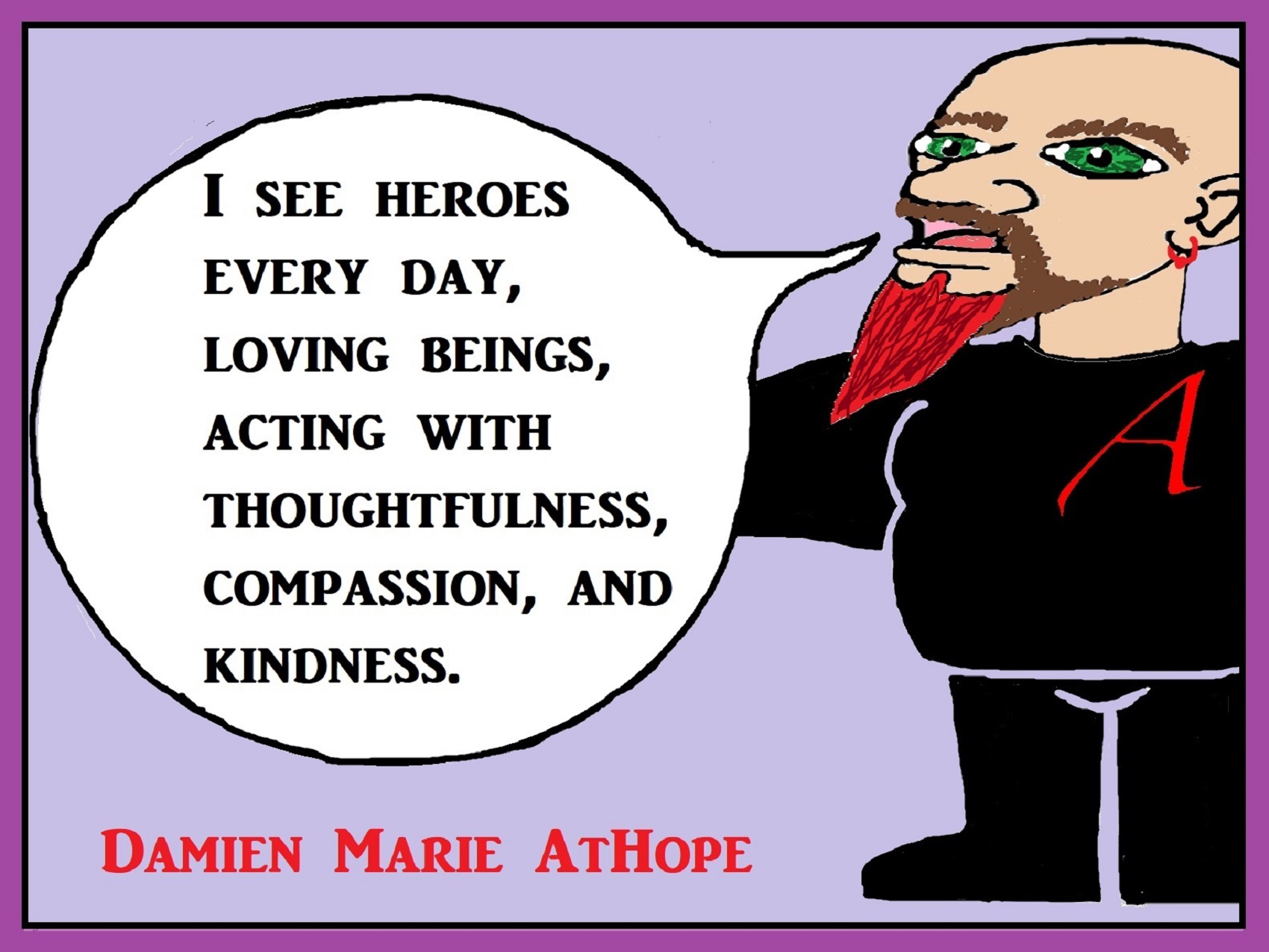
Ethics are the standard used to support and respect rights, the value of rights is the person, that a high standard of ethics wishes to adhere to. A good person helps themselves, yet a great person my friend is found when one helps others. I am saying all one must be to be good is done to themselves, Whereas, the fullness of good, to the level of or state of greatness, happens when one helps others. Kindness is hard at times, as it often requires a death of my ego to allow the life of my potential for empathy and care.
Being mean is easy. I wish to do what can be hard; kindness. Being mean is easy it takes nothing but loss of control, which I am still too often prone to falling into. That said I would like to strive to be kind even it is not extended to me as I don’t want to just follow my weakness I wish to champion my strength, as I wish to more than just not lousing control I wish to be the one in control exhibiting if I can live up to it an example of bravery. This bravery is not out of bravado but the flushing of negative in a heart set free, to me the fact that I strive a young life of profound unkindness almost ruined me forever. I want to be more than the pain that made me or the abuse and unkindness that all but unsaved me. I could be the nothing or the everything if I choose, what was done it out of my control but what I do is not just in my control, it is as if I have all my life been lost if an attitude of attack but now with axiology, humanism and rationalism on a quest like gilded Knights of long ago to perjure a beloved treasure.
I see now, as one who was to often as a child not shown kindness, that life’s journey is made wealthy by the added a human behavioral health resource treasure, a wellspring of renewing, which in found in kindness. I wish to be so strung I have no fear of looking weak and instead show others what a life now bent on helping can really be, when I am brave in my kindness. Anyone can be kind to the kind even a madman but to be sure-footed to travail and be the better person is a gift I give to myself as I am going to do my best to make the world I would be proud to tell others about. It is not a meaningful argument to say well some disagree wanting the freedom to be untrustworthy, unsafe, and not free to all employees or the public with good adherence to high valued behaviors. The fact that there are thieves mean nothing in relation to the unethics of stealing.
Societies, all of them even anarchist ones except for maybe some version of anarcho-primitivism, will hold an ethic even if it is as simple as the principle of non-aggression. Which is enforced if it is violated. It is enforcing a societal ethic expectation or a universal ethical standard, So, again we all love ethics in how others treat us, people only want it confused so much, when and if it requires them to apply ethics to others. But again this is a self-beneficial as theirs is a connection too good and well being.
Grasping ethics to me involves a reconnecting of it to the ontology of humans in the social moral train they cannot escape “We are Moral responsible beings. This fact is more important hen some preserve; it requires our personal as well as social advancement to succeed. Could we not succeed? Sure we can fail but what good is that and even if we do succumb to unethics, hell we seem bent on doing such at times. However, we are doing so at our own emotional pearl, then just a thing that is some ethic behavioral gift one gives to others. https://www.psychologytoday.com/blog/hot-thought/201006/ethical-thinking-should-be-rational-and-emotional
I try not to believe everything I think and only believe deeply in things with some amount of valid and reliable, reason and evidence. Moreover, I strive to stay in an open relationship with the truth thus be open to new truth. I try to be multicultural but never confuse this to be cultural relativism.
Some commit the error of assuming that the multiculturalist position necessarily implies an attitude of cultural relativism, or is subsumed under it. Observe the thinking of one of the most prominent advocates of multiculturalism: Canada’s Will Kymlicka. He includes under this heading all approaches which maintain that there are certain claims made by ethnic / cultural groups which are in keeping with the liberal principles of freedom and equality, and which justify granting certain special rights to minorities. Thus multiculturalism “in contrast to communitarianism“ does not stand in opposition to liberalism; rather, a liberal order is a condition of multiculturalism’s very existence. So Kymlicka terms his position “liberal culturalism.” The multiculturalist calls for certain group rights as complementary to the liberal order that until now has borne the stamp of the white, middle-aged, heterosexual male with no disabilities. But the liberal order claims universal “not relative“ validity. Hence the multiculturalist advocates a monistic or pluralistic world view, not one of cultural relativism! Ref
Individualism or Collectivism?
Rather than a collectivist which I do favore over individualism, I value the inbetween of mutualism thinking. I do see a point in not losing one’s rightful individualism in complete group emotion to the point this is one’s identity as only a group seems less than a helpful universal standard but also we are not being helpful in exclusionary individualism denying our group connectedness and support. I am thus in the land between some collectivist ideals but understanding or appreciate the understanding even if in a group am always an individual. not as a attitude but as this is how I actually think we are: the ontologically of social environment and the responding psychology and biology.
To me, when I refer to a muralist seeing that the group is not an individual neather is one only able to concern themselves with themselves and thrive to wellbeing past survive or selfishness of only irritating ones self to the limits of individualism with always be a respite of one that only hold a self understanding to navigate the world a non-individualism structure at the core of most societies, that one can get outside of mentally but not really internationally with the requirements social living with other humans in a society, something we have been doing thought not always very well and often keep going back to the limit of flushing of everyone including ones self actions have emotional consequences and often emotional consequences bring phical problems in us and other in which we inter relate.
Rationalism and Humanism?
According to Psychology Wiki: Rationalism, also known as the rationalist movement, is a philosophical doctrine that asserts that the truth can best be discovered by reason and factual analysis, rather than faith, dogma or religious teaching. Rationalism has some similarities in ideology and intent to humanism and atheism, in that it aims to provide a framework for social and philosophical discourse outside of religious or supernatural beliefs; however, rationalism differs from both of these, in that:
“As its name suggests, humanism is centered on the dignity and worth of people. While rationalism is a key component of humanism, there is also a strong ethical component in humanism that rationalism does not require directly but towards thinking. As a result, being a rationalist does not necessarily mean being a humanist.”
Atheism, a disbelief or lack of belief in God, can be on any basis, or none at all, so it doesn’t require rationalism. Furthermore, rationalism does not, in itself, affirm or deny atheism, although it does reject any belief based on faith alone. Historically, many rationalists were not atheists. Presumably, people who are rationalists today generally do not believe that theism can be rationally justified, because modern-day rationalism is strongly correlated with atheism. As a result, most—if not all—prominent rationalists today, including scientists such as Richard Dawkins and activists such as Sanal Edamaruku are atheists. Ref Or lesser prominent is Damien Marie AtHope who champions rationalism, atheism and humanism.
Kohlberg’s Stages of Moral Development
Level 1 – Pre-conventional morality:
At the pre-conventional level (most nine-year-olds and younger, some over nine), we don’t have a personal code of morality. Instead, our moral code is shaped by the standards of adults and the consequences of following or breaking their rules. Authority is outside the individual and reasoning is based on the physical consequences of actions.
- Stage 1. Obedience and Punishment Orientation. The child/individual is good in order to avoid being punished. If a person is punished, they must have done wrong.
- Stage 2. Individualism and Exchange. At this stage children recognize that there is not just one right view that is handed down by the authorities. Different individuals have different viewpoints.
Level 2 – Conventional morality:
At the conventional level (most adolescents and adults), we begin to internalize the moral standards of valued adult role models. Authority is internalized but not questioned and reasoning is based on the norms of the group to which the person belongs.
- Stage 3. Good Interpersonal Relationships. The child/individual is good in order to be seen as being a good person by others. Therefore, answers relate to the approval of others.
- Stage 4. Maintaining the Social Order. The child/individual becomes aware of the wider rules of society so judgments concern obeying the rules in order to uphold the law and to avoid guilt.
Level 3 – Post-conventional morality:
Individual judgment is based on self-chosen principles, and moral reasoning is based on individual rights and justice. According to Kohlberg this level of moral reasoning is as far as most people get. Only 10-15% are capable of the kind of abstract thinking necessary for stage 5 or 6 (post-conventional morality). That is to say most people take their moral views from those around them and only a minority think through ethical principles for themselves.
- Stage 5. Social Contract and Individual Rights. The child/individual becomes aware that while rules/laws might exist for the good of the greatest number, there are times when they will work against the interest of particular individuals. The issues are not always clear cut. For example, in Heinz’s dilemma the protection of life is more important than breaking the law against stealing.
- Stage 6. Universal Principles. People at this stage have developed their own set of moral guidelines which may or may not fit the law. The principles apply to everyone. E.g. human rights, justice and equality. The person will be prepared to act to defend these principles even if it means going against the rest of society in the process and having to pay the consequences of disapproval and or imprisonment. Kohlberg doubted few people reached this stage.
Problems with Kohlberg’s Methods
- The dilemmas are artificial (i.e. they lack ecological validity)
Most of the dilemmas are unfamiliar to most people (Rosen, 1980). For example, it is all very well in the Heinz dilemma asking subjects whether Heinz should steal the drug to save his wife. However Kohlberg’s subjects were aged between 10 and 16. They have never been married, and never been placed in a situation remotely like the one in the story. How should they know whether Heinz should steal the drug?
- The sample is biased
According to Gilligan (1977), because Kohlberg’s theory was based on an all-male sample, the stages reflect a male definition of morality (it’s androcentric). Mens’ morality is based on abstract principles of law and justice, while womens’ is based on principles of compassion and care. Further, the gender bias issue raised by Gilligan is a reminded of the significant gender debate still present in psychology, which when ignored, can have a large impact on the results obtained through psychological research.
- The dilemmas are hypothetical (i.e. they are not real)
In a real situation, what course of action a person takes will have real consequences – and sometimes very unpleasant ones for themselves. Would subjects reason in the same way if they were placed in a real situation? We just don’t know. The fact that Kohlberg’s theory is heavily dependent on an individual’s response to an artificial dilemma brings question to the validity of the results obtained through this research. People may respond very differently to real life situations that they find themselves in than they do with an artificial dilemma presented to them in the comfort of a research environment.
- Poor research design
The way in which Kohlberg carried out his research when constructing this theory may not have been the best way to test whether all children follow the same sequence of stage progression. His research was cross-sectional, meaning that he interviewed children of different ages to see what level of moral development they were at. A better way to see if all children follow the same order through the stages would have been to carry out longitudinal research on the same children. However, longitudinal research on Kohlberg’s theory has since been carried out by Colby et al. (1983) who tested 58 male participants of Kohlberg’s original study. She tested them 6 times in the span of 27 years and found support for Kohlberg’s original conclusion, that we all pass through the stages of moral development in the same order.
Problems with Kohlberg’s Theory
- Are there distinct stages of moral development?
Kohlberg claims that there are but the evidence does not always support this conclusion. For example a person who justified a decision on the basis of principled reasoning in one situation (post conventional morality stage 5 or 6) would frequently fall back on conventional reasoning (stage 3 or 4) with another story. In practice it seems that reasoning about right and wrong depends more upon the situation than upon general rules. What is more individuals do not always progress through the stages and Rest (1979) found that one in fourteen actually slipped backwards. The evidence for distinct stages of moral development looks very weak and some would argue that behind the theory is a culturally biased belief in the superiority of American values over those of other cultures and societies.
- Does moral judgement match moral behavior?
Kohlberg never claimed that there would be a one to one correspondence between thinking and acting (what we say and what we do) but he does suggest that the two are linked. However, Bee (1994) suggests that we also need to take account of:
- a) habits that people have developed over time.
- b) whether people see situations as demanding their participation.
- c) the costs and benefits of behaving in a particular way.
- d) competing motive such as peer pressure, self interest and so on.
Overall Bee points out that moral behavior is only partly a question of moral reasoning. It is also to do with social factors.
- Is justice the most fundamental moral principle?
This is Kohlberg’s view. However, Gilligan (1977) suggests that the principle of caring for others is equally important. Furthermore Kohlberg claims that the moral reasoning of males has been often in advance of that of females. Girls are often found to be at stage 3 in Kohlberg’s system (good boy-nice girl orientation) whereas boys are more often found to be at stage 4 (Law and Order orientation). Gilligan replies:
“The very traits that have traditionally defined the goodness of women, their care for and sensitivity to the needs of others, are those that mark them out as deficient in moral development.”
In other words, Gilligan is claiming that there is a sex bias in Kohlberg’s theory. He neglects the feminine voice of compassion, love and non-violence, which is associated with the socialization of girls. Gilligan reached the conclusion that Kohlberg’s theory did not account for the fact that women approach moral problems from an ‘ethics of care’, rather than an ‘ethics of justice’ perspective, which challenges some of the fundamental assumptions of Kohlberg’s theory.
But as I see it both Gilligan as well as Kohlberg is on the right tracts because: Ethical Thinking or Moral Reasoning Should be “Rational AND Emotional.”
Progressive Logic by William J. Kelleher, Ph.D.
Summary: What are the implications of Formal Axiology for assessing the value implications of public policies, laws, and government actions?This can already be seen in the history of Progressive reforms throughout American history. What does the Abolition movement have in common with the anti-child labor movement, the demands for compulsory public education, pro-choice, euthanasia, criminal justice reform, and other public policies considered“progressive”?
Progressive Logic
Shows that the common element is a logic of values which takes as its basic premise that “all persons always deserve positive regard.”From this primary value axiom two “fallacies” and two “enhancements” follow.Value Fallacies:The Ideological Fallacy — to value ideas over persons.The Instrumental Fallacy — to value persons solely for their usefulness.Value Enhancements:The Ideological Enhancement — using ideas to enhance or enrich the lives of persons.The Instrumental Enhancement — using persons to enhance or enrich their lives.These principles of value logic are applied to numerous aspects of American life,culture, and public policies. Ref
“Morality requires both thinking and feeling.”
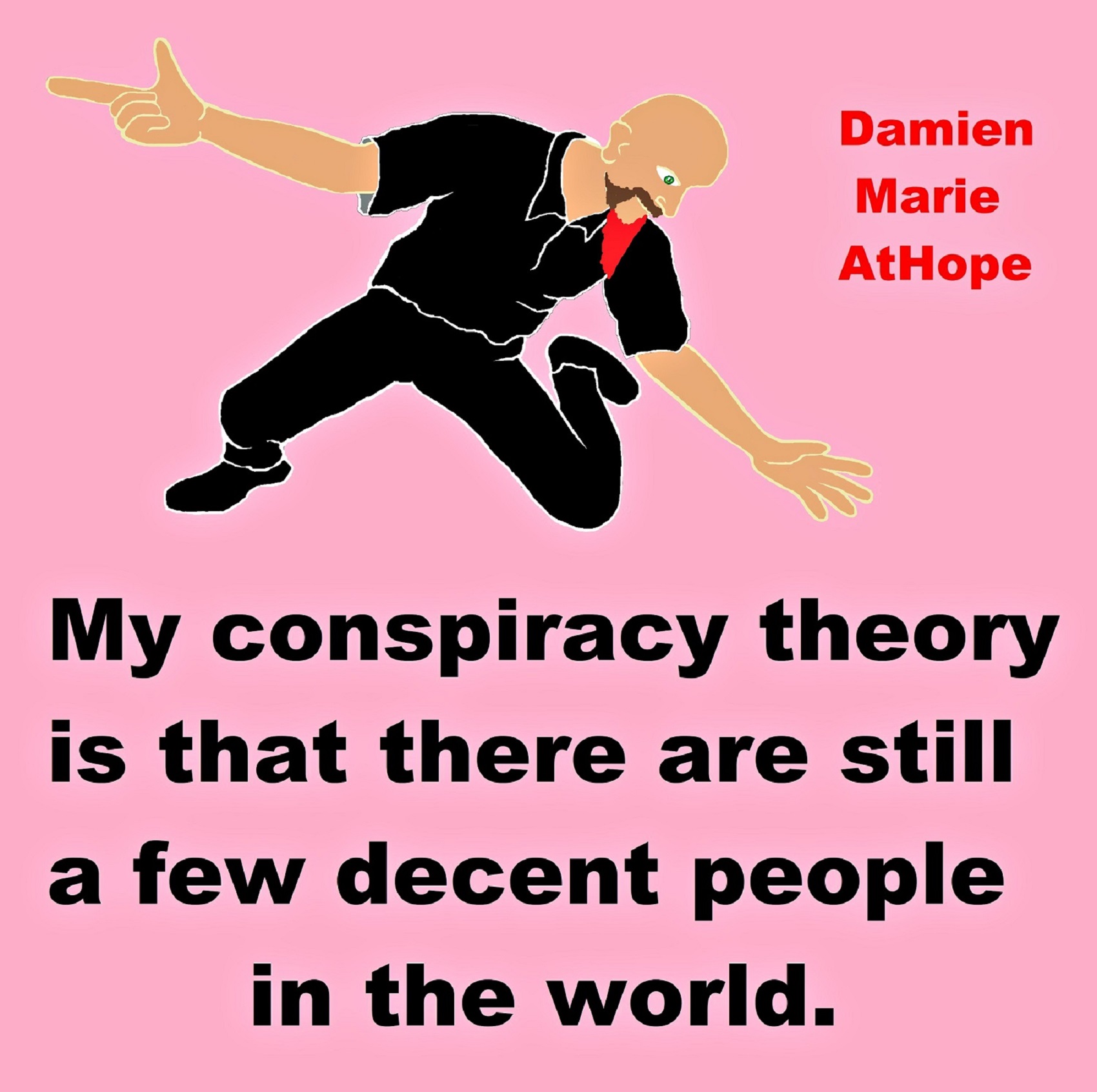

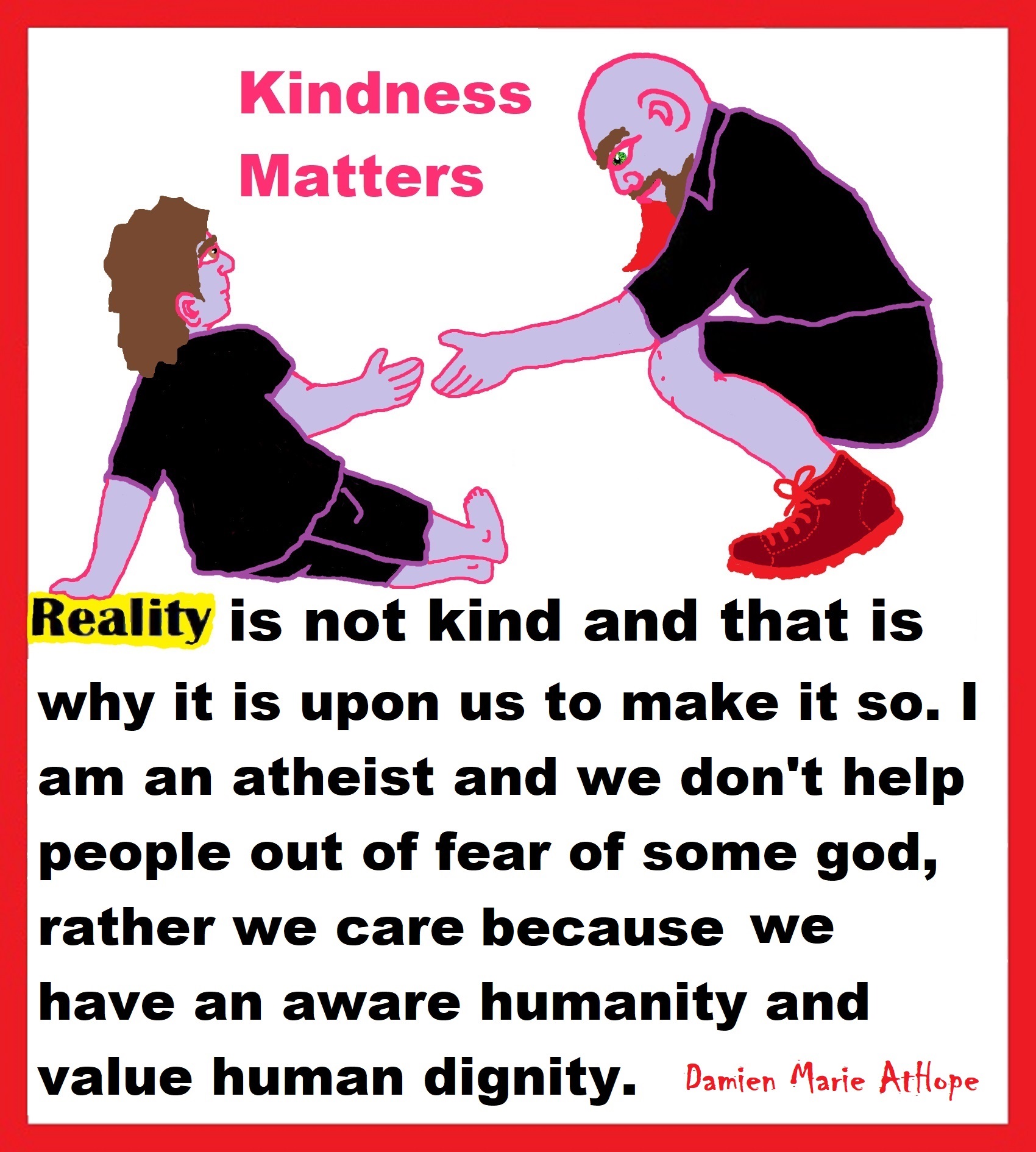

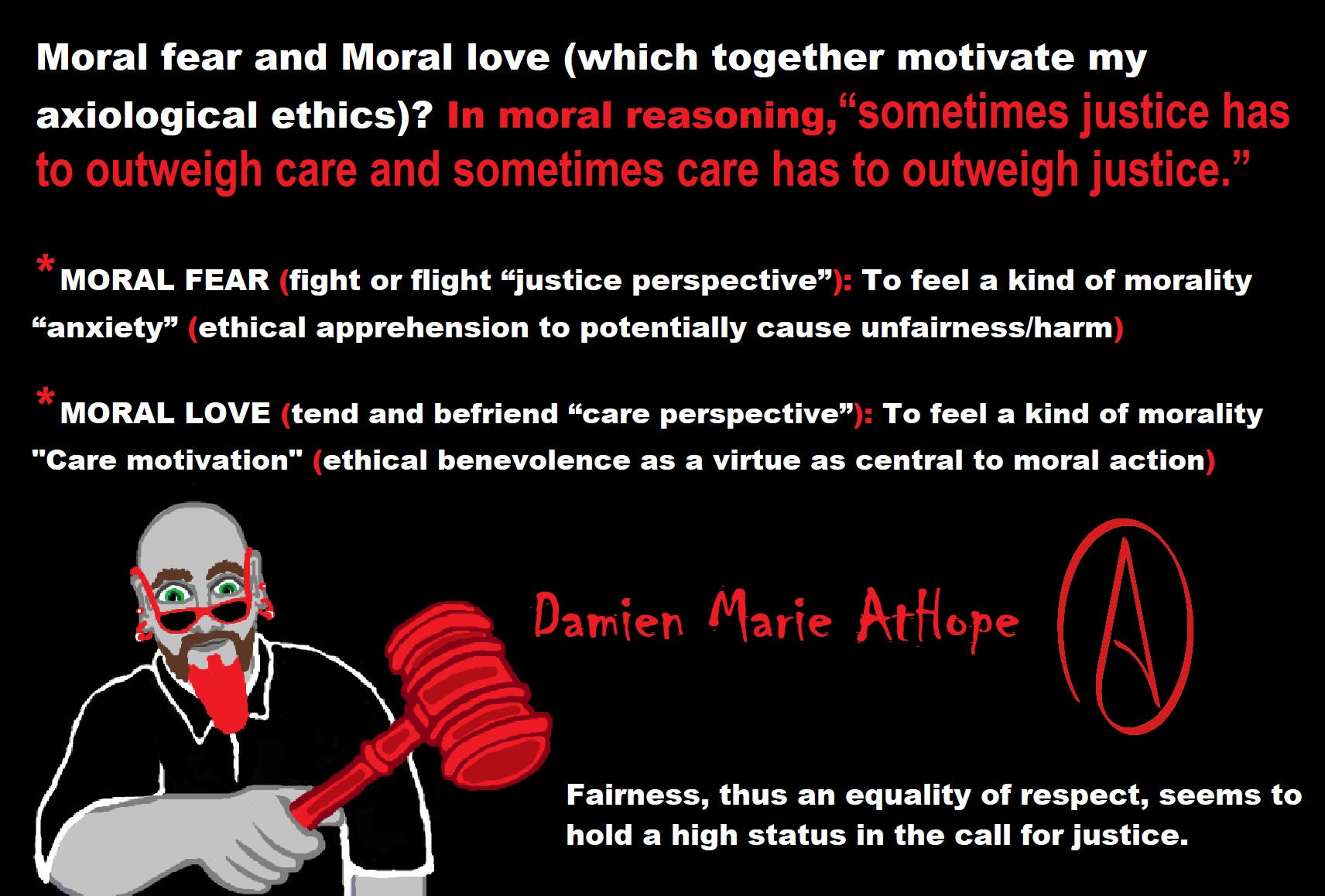
Morality: all subjective or all objective?
True Morality Not the Golden Rule…
Real Morality vs. Pseudo Morality
Believe in Good, Humanist Morality?
How We Think is as Important as How We Behave.
What we don’t understand, we may come to fear. That which you fear, you may come to hate. That which you hate, you may come to wish destroyed it. Thus, you maybe compelled to harm, oppress, abuse, and/or kill. So, stop all this by the hard work of being understanding not just hate because someone is different. Blind hate is just as disgusting as blind faith. Mob rule/mob mentality has often involved blind hate. Top 10 Instances Of Mob Mentality
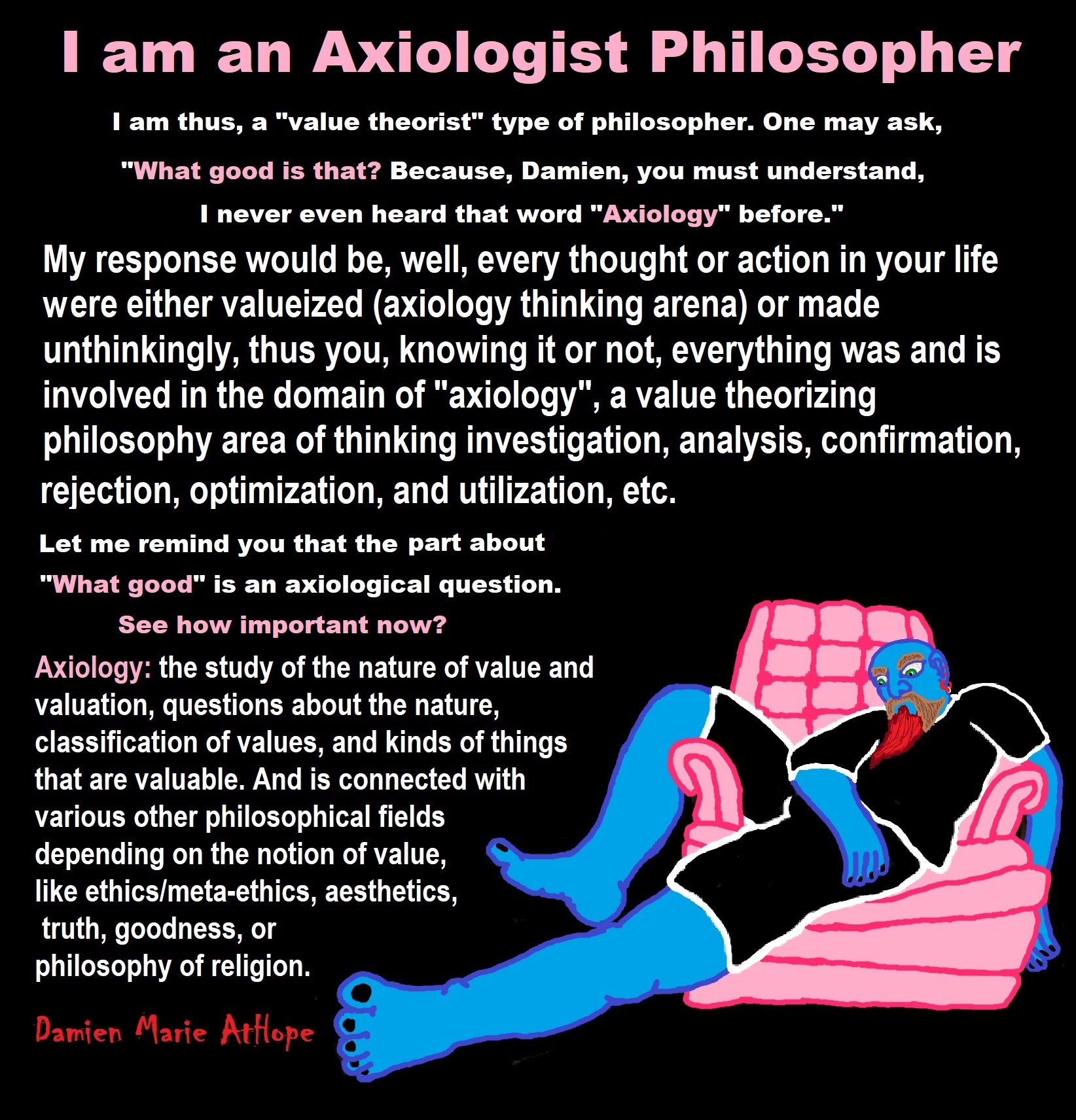

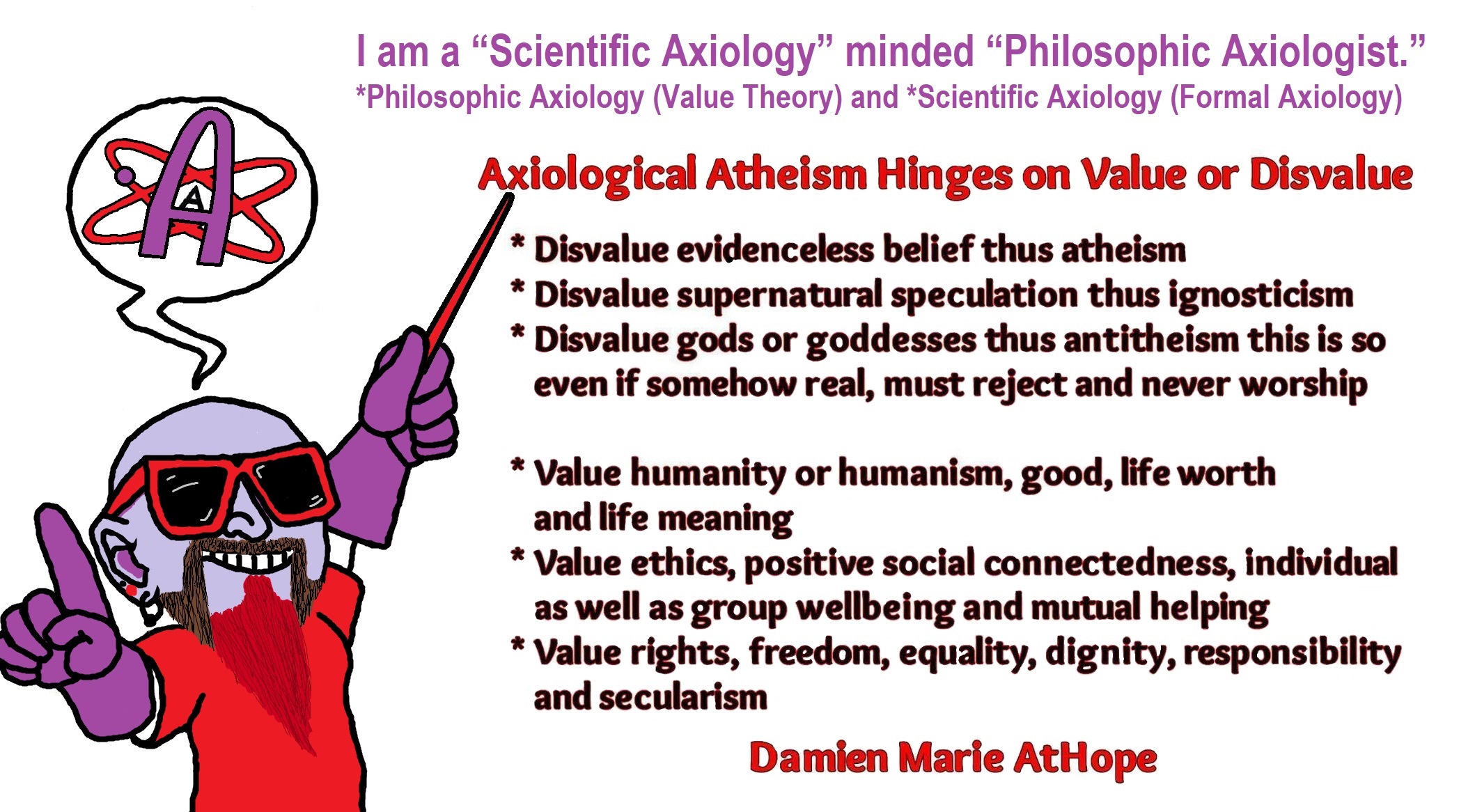

My thoughts on Religion Evolution with external links for more info:
- (Pre-Animism Africa mainly, but also Europe, and Asia at least 300,000 years ago), (Pre-Animism – Oxford Dictionaries)
- (Animism Africa around 100,000 years ago), (Animism – Britannica.com)
- (Totemism Europe around 50,000 years ago), (Totemism – Anthropology)
- (Shamanism Siberia around 30,000 years ago), (Shamanism – Britannica.com)
- (Paganism Turkey around 12,000 years ago), (Paganism – BBC Religion)
- (Progressed Organized Religion “Institutional Religion” Egypt around 5,000 years ago), (Ancient Egyptian Religion – Britannica.com)
- (CURRENT “World” RELIGIONS after 4,000 years ago) (Origin of Major Religions – Sacred Texts)
- (Early Atheistic Doubting at least by 2,600 years ago) (History of Atheism – Wikipedia)
“Religion is an Evolved Product” and Yes, Religion is Like Fear Given Wings…
Atheists talk about gods and religions for the same reason doctors talk about cancer, they are looking for a cure, or a firefighter talks about fires because they burn people and they care to stop them. We atheists too often feel a need to help the victims of mental slavery, held in the bondage that is the false beliefs of gods and the conspiracy theories of reality found in religions.
Understanding Religion Evolution:
- Pre-Animism (at least 300,000 years ago)
- Animism (Africa: 100,000 years ago)
- Totemism (Europe: 50,000 years ago)
- Shamanism (Siberia: 30,000 years ago)
- Paganism (Turkey: 12,000 years ago)
- Progressed organized religion (Egypt: 5,000 years ago), (Egypt, the First Dynasty 5,150 years ago)
- CURRENT “World” RELIGIONS (after 4,000 years ago)
- Early Atheistic Doubting (at least by 2,600 years ago)
“An Archaeological/Anthropological Understanding of Religion Evolution”
It seems ancient peoples had to survived amazing threats in a “dangerous universe (by superstition perceived as good and evil),” and human “immorality or imperfection of the soul” which was thought to affect the still living, leading to ancestor worship. This ancestor worship presumably led to the belief in supernatural beings, and then some of these were turned into the belief in gods. This feeble myth called gods were just a human conceived “made from nothing into something over and over, changing, again and again, taking on more as they evolve, all the while they are thought to be special,” but it is just supernatural animistic spirit-belief perceived as sacred.
Quick Evolution of Religion?
Pre-Animism (at least 300,000 years ago) pre-religion is a beginning that evolves into later Animism. So, Religion as we think of it, to me, all starts in a general way with Animism (Africa: 100,000 years ago) (theoretical belief in supernatural powers/spirits), then this is physically expressed in or with Totemism (Europe: 50,000 years ago) (theoretical belief in mythical relationship with powers/spirits through a totem item), which then enlists a full-time specific person to do this worship and believed interacting Shamanism (Siberia/Russia: 30,000 years ago) (theoretical belief in access and influence with spirits through ritual), and then there is the further employment of myths and gods added to all the above giving you Paganism (Turkey: 12,000 years ago) (often a lot more nature-based than most current top world religions, thus hinting to their close link to more ancient religious thinking it stems from). My hypothesis is expressed with an explanation of the building of a theatrical house (modern religions development). Progressed organized religion (Egypt: 5,000 years ago) with CURRENT “World” RELIGIONS (after 4,000 years ago).
Historically, in large city-state societies (such as Egypt or Iraq) starting around 5,000 years ago culminated to make religion something kind of new, a sociocultural-governmental-religious monarchy, where all or at least many of the people of such large city-state societies seem familiar with and committed to the existence of “religion” as the integrated life identity package of control dynamics with a fixed closed magical doctrine, but this juggernaut integrated religion identity package of Dogmatic-Propaganda certainly did not exist or if developed to an extent it was highly limited in most smaller prehistoric societies as they seem to lack most of the strong control dynamics with a fixed closed magical doctrine (magical beliefs could be at times be added or removed). Many people just want to see developed religious dynamics everywhere even if it is not. Instead, all that is found is largely fragments until the domestication of religion.
Religions, as we think of them today, are a new fad, even if they go back to around 6,000 years in the timeline of human existence, this amounts to almost nothing when seen in the long slow evolution of religion at least around 70,000 years ago with one of the oldest ritual worship. Stone Snake of South Africa: “first human worship” 70,000 years ago. This message of how religion and gods among them are clearly a man-made thing that was developed slowly as it was invented and then implemented peace by peace discrediting them all. Which seems to be a simple point some are just not grasping how devastating to any claims of truth when we can see the lie clearly in the archeological sites.
I wish people fought as hard for the actual values as they fight for the group/clan names political or otherwise they think support values. Every amount spent on war is theft to children in need of food or the homeless kept from shelter.
Here are several of my blog posts on history:
- To Find Truth You Must First Look
- (Magdalenian/Iberomaurusian) Connections to the First Paganists of the early Neolithic Near East Dating from around 17,000 to 12,000 Years Ago
- Natufians: an Ancient People at the Origins of Agriculture and Sedentary Life
- Possible Clan Leader/Special “MALE” Ancestor Totem Poles At Least 13,500 years ago?
- Jewish People with DNA at least 13,200 years old, Judaism, and the Origins of Some of its Ideas
- Baltic Reindeer Hunters: Swiderian, Lyngby, Ahrensburgian, and Krasnosillya cultures 12,020 to 11,020 years ago are evidence of powerful migratory waves during the last 13,000 years and a genetic link to Saami and the Finno-Ugric peoples.
- The Rise of Inequality: patriarchy and state hierarchy inequality
- Fertile Crescent 12,500 – 9,500 Years Ago: fertility and death cult belief system?
- 12,400 – 11,700 Years Ago – Kortik Tepe (Turkey) Pre/early-Agriculture Cultic Ritualism
- Ritualistic Bird Symbolism at Gobekli Tepe and its “Ancestor Cult”
- Male-Homosexual (female-like) / Trans-woman (female) Seated Figurine from Gobekli Tepe
- Could a 12,000-year-old Bull Geoglyph at Göbekli Tepe relate to older Bull and Female Art 25,000 years ago and Later Goddess and the Bull cults like Catal Huyuk?
- Sedentism and the Creation of goddesses around 12,000 years ago as well as male gods after 7,000 years ago.
- Alcohol, where Agriculture and Religion Become one? Such as Gobekli Tepe’s Ritualistic use of Grain as Food and Ritual Drink
- Neolithic Ritual Sites with T-Pillars and other Cultic Pillars
- Paganism: Goddesses around 12,000 years ago then Male Gods after 7,000 years ago
- First Patriarchy: Split of Women’s Status around 12,000 years ago & First Hierarchy: fall of Women’s Status around 5,000 years ago.
- Natufians: an Ancient People at the Origins of Agriculture and Sedentary Life
- J DNA and the Spread of Agricultural Religion (paganism)
- Paganism: an approximately 12,000-year-old belief system
- Paganism 12,000 years old: related to “Anarchism and Socialism” (Pre-Capitalism)
- Shaman burial in Israel 12,000 years ago and the Shamanism Phenomena
- Need to Mythicized: gods and goddesses
- 12,000 – 7,000 Years Ago – Paleo-Indian Culture (The Americas)
- 12,000 – 2,000 Years Ago – Indigenous-Scandinavians (Nordic)
- Norse did not wear helmets with horns?
- Pre-Pottery Neolithic Skull Cult around 11,500 to 8,400 Years Ago?
- 10,400 – 10,100 Years Ago, in Turkey the Nevail Cori Religious Settlement
- 9,000-6,500 Years Old Submerged Pre-Pottery/Pottery Neolithic Ritual Settlements off Israel’s Coast
- Catal Huyuk “first religious designed city” around 9,500 to 7,700 years ago (Turkey)
- Cultic Hunting at Catal Huyuk “first religious designed city”
- Special Items and Art as well as Special Elite Burials at Catal Huyuk
- New Rituals and Violence with the appearance of Pottery and People?
- Haplogroup N and its related Uralic Languages and Cultures
- Ainu people, Sámi people, Native Americans, the Ancient North Eurasians, and Paganistic-Shamanism with Totemism
- Ideas, Technology and People from Turkey, Europe, to China and Back again 9,000 to 5,000 years ago?
- First Pottery of Europe and the Related Cultures
- 9,000 years old Neolithic Artifacts Judean Desert and Hills Israel
- 9,000-7,000 years-old Sex and Death Rituals: Cult Sites in Israel, Jordan, and the Sinai
- 9,000-8500 year old Horned Female shaman Bad Dürrenberg Germany
- Neolithic Jewelry and the Spread of Farming in Europe Emerging out of West Turkey
- 8,600-year-old Tortoise Shells in Neolithic graves in central China have Early Writing and Shamanism
- Swing of the Mace: the rise of Elite, Forced Authority, and Inequality begin to Emerge 8,500 years ago?
- Migrations and Changing Europeans Beginning around 8,000 Years Ago
- My “Steppe-Anatolian-Kurgan hypothesis” 8,000/7,000 years ago
- Around 8,000-year-old Shared Idea of the Mistress of Animals, “Ritual” Motif
- Pre-Columbian Red-Paint (red ochre) Maritime Archaic Culture 8,000-3,000 years ago
- 7,522-6,522 years ago Linear Pottery culture which I think relates to Arcane Capitalism’s origins
- Arcane Capitalism: Primitive socialism, Primitive capital, Private ownership, Means of production, Market capitalism, Class discrimination, and Petite bourgeoisie (smaller capitalists)
- 7,500-4,750 years old Ritualistic Cucuteni-Trypillian culture of Moldova, Romania, and Ukraine
- Roots of a changing early society 7,200-6,700 years ago Jordan and Israel
- Agriculture religion (Paganism) with farming reached Britain between about 7,000 to 6,500 or so years ago and seemingly expressed in things like Western Europe’s Long Barrows
- My Thoughts on Possible Migrations of “R” DNA and Proto-Indo-European?
- “Millet” Spreading from China 7,022 years ago to Europe and related Language may have Spread with it leading to Proto-Indo-European
- Proto-Indo-European (PIE), ancestor of Indo-European languages: DNA, Society, Language, and Mythology
- The Dnieper–Donets culture and Asian varieties of Millet from China to the Black Sea region of Europe by 7,022 years ago
- Kurgan 6,000 years ago/dolmens 7,000 years ago: funeral, ritual, and other?
- 7,020 to 6,020-year-old Proto-Indo-European Homeland of Urheimat or proposed home of their Language and Religion
- Ancient Megaliths: Kurgan, Ziggurat, Pyramid, Menhir, Trilithon, Dolman, Kromlech, and Kromlech of Trilithons
- The Mytheme of Ancient North Eurasian Sacred-Dog belief and similar motifs are found in Indo-European, Native American, and Siberian comparative mythology
- Elite Power Accumulation: Ancient Trade, Tokens, Writing, Wealth, Merchants, and Priest-Kings
- Sacred Mounds, Mountains, Kurgans, and Pyramids may hold deep connections?
- Between 7,000-5,000 Years ago, rise of unequal hierarchy elite, leading to a “birth of the State” or worship of power, strong new sexism, oppression of non-elites, and the fall of Women’s equal status
- Paganism 7,000-5,000 years old: related to “Anarchism and Socialism” (Capitalism) (World War 0) Elite & their slaves
- Hell and Underworld mythologies starting maybe as far back as 7,000 to 5,000 years ago with the Proto-Indo-Europeans?
- The First Expression of the Male God around 7,000 years ago?
- White (light complexion skin) Bigotry and Sexism started 7,000 years ago?
- Around 7,000-year-old Shared Idea of the Divine Bird (Tutelary and/or Trickster spirit/deity), “Ritual” Motif
- Nekhbet an Ancient Egyptian Vulture Goddess and Tutelary Deity
- 6,720 to 4,920 years old Ritualistic Hongshan Culture of Inner Mongolia with 5,000-year-old Pyramid Mounds and Temples
- First proto-king in the Balkans, Varna culture around 6,500 years ago?
- 6,500–5,800 years ago in Israel Late Chalcolithic (Copper Age) Period in the Southern Levant Seems to Express Northern Levant Migrations, Cultural and Religious Transfer
- KING OF BEASTS: Master of Animals “Ritual” Motif, around 6,000 years old or older…
- Around 6000-year-old Shared Idea of the Solid Wheel & the Spoked Wheel-Shaped Ritual Motif
- “The Ghassulian Star,” a mysterious 6,000-year-old mural from Jordan; a Proto-Star of Ishtar, Star of Inanna or Star of Venus?
- Religious/Ritual Ideas, including goddesses and gods as well as ritual mounds or pyramids from Northeastern Asia at least 6,000 years old, seemingly filtering to Iran, Iraq, the Mediterranean, Europe, Egypt, and the Americas?
- Maykop (5,720–5,020 years ago) Caucasus region Bronze Age culture-related to Copper Age farmers from the south, influenced by the Ubaid period and Leyla-Tepe culture, as well as influencing the Kura-Araxes culture
- 5-600-year-old Tomb, Mummy, and First Bearded Male Figurine in a Grave
- Kura-Araxes Cultural 5,520 to 4,470 years old DNA traces to the Canaanites, Arabs, and Jews
- Minoan/Cretan (Keftiu) Civilization and Religion around 5,520 to 3,120 years ago
- Evolution Of Science at least by 5,500 years ago
- 5,500 Years old birth of the State, the rise of Hierarchy, and the fall of Women’s status
- “Jiroft culture” 5,100 – 4,200 years ago and the History of Iran
- Stonehenge: Paganistic Burial and Astrological Ritual Complex, England (5,100-3,600 years ago)
- Around 5,000-year-old Shared Idea of the “Tree of Life” Ritual Motif
- Complex rituals for elite, seen from China to Egypt, at least by 5,000 years ago
- Around 5,000 years ago: “Birth of the State” where Religion gets Military Power and Influence
- The Center of the World “Axis Mundi” and/or “Sacred Mountains” Mythology Could Relate to the Altai Mountains, Heart of the Steppe
- Progressed organized religion starts, an approximately 5,000-year-old belief system
- China’s Civilization between 5,000-3,000 years ago, was a time of war and class struggle, violent transition from free clans to a Slave or Elite society
- Origin of Logics is Naturalistic Observation at least by around 5,000 years ago.
- Paganism 5,000 years old: progressed organized religion and the state: related to “Anarchism and Socialism” (Kings and the Rise of the State)
- Ziggurats (multi-platform temples: 4,900 years old) to Pyramids (multi-platform tombs: 4,700 years old)
- Did a 4,520–4,420-year-old Volcano In Turkey Inspire the Bible God?
- Finland’s Horned Shaman and Pre-Horned-God at least 4,500 years ago?
- 4,000-year-Old Dolmens in Israel: A Connected Dolmen Religious Phenomenon?
- Creation myths: From chaos, Ex nihilo, Earth-diver, Emergence, World egg, and World parent
- Bronze Age “Ritual” connections of the Bell Beaker culture with the Corded Ware/Single Grave culture, which were related to the Yamnaya culture and Proto-Indo-European Languages/Religions
- Low Gods (Earth/ Tutelary deity), High Gods (Sky/Supreme deity), and Moralistic Gods (Deity enforcement/divine order)
- The exchange of people, ideas, and material-culture including, to me, the new god (Sky Father) and goddess (Earth Mother) religion between the Cucuteni-Trypillians and others which is then spread far and wide
- Koryaks: Indigenous People of the Russian Far East and Big Raven myths also found in Tlingit, Haida, Tsimshian, and other Indigenous People of North America
- 42 Principles Of Maat (Egyptian Goddess of the justice) around 4,400 years ago, 2000 Years Before Ten Commandments
- “Happy Easter” Well Happy Eostre/Ishter
- 4,320-3,820 years old “Shimao” (North China) site with Totemistic-Shamanistic Paganism and a Stepped Pyramid
- 4,250 to 3,400 Year old Stonehenge from Russia: Arkaim?
- 4,100-year-old beaker with medicinal & flowering plants in a grave of a woman in Scotland
- Early European Farmer ancestry, Kelif el Boroud people with the Cardial Ware culture, and the Bell Beaker culture Paganists too, spread into North Africa, then to the Canary Islands off West Africa
- Flood Accounts: Gilgamesh epic (4,100 years ago) Noah in Genesis (2,600 years ago)
- Paganism 4,000 years old: related to “Anarchism and Socialism” (First Moralistic gods, then the Origin time of Monotheism)
- When was the beginning: TIMELINE OF CURRENT RELIGIONS, which start around 4,000 years ago.
- Early Religions Thought to Express Proto-Monotheistic Systems around 4,000 years ago
- Kultepe? An archaeological site with a 4,000 years old women’s rights document.
- Single God Religions (Monotheism) = “Man-o-theism” started around 4,000 years ago with the Great Sky Spirit/God Tiān (天)?
- Confucianism’s Tiān (Shangdi god 4,000 years old): Supernaturalism, Pantheism or Theism?
- Yes, Your Male God is Ridiculous
- Mythology, a Lunar Deity is a Goddess or God of the Moon
- Sacred Land, Hills, and Mountains: Sami Mythology (Paganistic Shamanism)
- Horse Worship/Sacrifice: mythical union of Ruling Elite/Kingship and the Horse
- The Amorite/Amurru people’s God Amurru “Lord of the Steppe”, relates to the Origins of the Bible God?
- Bronze Age Exotic Trade Routes Spread Quite Far as well as Spread Religious Ideas with Them
- Sami and the Northern Indigenous Peoples Landscape, Language, and its Connection to Religion
- Prototype of Ancient Analemmatic Sundials around 3,900-3,150 years ago and a Possible Solar Connection to gods?
- Judaism is around 3,450 or 3,250 years old. (“Paleo-Hebrew” 3,000 years ago and Torah 2,500 years ago)
- The Weakening of Ancient Trade and the Strengthening of Religions around 3000 years ago?
- Are you aware that there are religions that worship women gods, explain now religion tears women down?
- Animistic, Totemistic, and Paganistic Superstition Origins of bible god and the bible’s Religion.
- Myths and Folklore: “Trickster gods and goddesses”
- Jews, Judaism, and the Origins of Some of its Ideas
- An Old Branch of Religion Still Giving Fruit: Sacred Trees
- Dating the BIBLE: naming names and telling times (written less than 3,000 years ago, provable to 2,200 years ago)
- Did a Volcano Inspire the bible god?
- Dené–Yeniseian language, Old Copper Complex, and Pre-Columbian Mound Builders?
- No “dinosaurs and humans didn’t exist together just because some think they are in the bible itself”
- Sacred Shit and Sacred Animals?
- Everyone Killed in the Bible Flood? “Nephilim” (giants)?
- Hey, Damien dude, I have a question for you regarding “the bible” Exodus.
- Archaeology Disproves the Bible
- Bible Battle, Just More, Bible Babble
- The Jericho Conquest lie?
- Canaanites and Israelites?
- Accurate Account on how did Christianity Began?
- Let’s talk about Christianity.
- So the 10 commandments isn’t anything to go by either right?
- Misinformed christian
- Debunking Jesus?
- Paulism vs Jesus
- Ok, you seem confused so let’s talk about Buddhism.
- Unacknowledged Buddhism: Gods, Savior, Demons, Rebirth, Heavens, Hells, and Terrorism
- His Foolishness The Dalai Lama
- Yin and Yang is sexist with an ORIGIN around 2,300 years ago?
- I Believe Archaeology, not Myths & Why Not, as the Religious Myths Already Violate Reason!
- Archaeological, Scientific, & Philosophic evidence shows the god myth is man-made nonsense.
- Aquatic Ape Theory/Hypothesis? As Always, Just Pseudoscience.
- Ancient Aliens Conspiracy Theorists are Pseudohistorians
- The Pseudohistoric and Pseudoscientific claims about “Bakoni Ruins” of South Africa
- Why do people think Religion is much more than supernaturalism and superstitionism?
- Religion is an Evolved Product
- Was the Value of Ancient Women Different?
- 1000 to 1100 CE, human sacrifice Cahokia Mounds a pre-Columbian Native American site
- Feminist atheists as far back as the 1800s?
- Promoting Religion as Real is Mentally Harmful to a Flourishing Humanity
- Screw All Religions and Their Toxic lies, they are all fraud
- Forget Religions’ Unfounded Myths, I Have Substantiated “Archaeology Facts.”
- Religion Dispersal throughout the World
- I Hate Religion Just as I Hate all Pseudoscience
- Exposing Scientology, Eckankar, Wicca and Other Nonsense?
- Main deity or religious belief systems
- Quit Trying to Invent Your God From the Scraps of Science.
- Archaeological, Scientific, & Philosophic evidence shows the god myth is man-made nonsense.
- Ancient Alien Conspiracy Theorists: Misunderstanding, Rhetoric, Misinformation, Fabrications, and Lies
- Misinformation, Distortion, and Pseudoscience in Talking with a Christian Creationist
- Judging the Lack of Goodness in Gods, Even the Norse God Odin
- Challenging the Belief in God-like Aliens and Gods in General
- A Challenge to Christian use of Torture Devices?
- Yes, Hinduism is a Religion
- Trump is One of the Most Reactionary Forces of Far-right Christian Extremism
- Was the Bull Head a Symbol of God? Yes!
- Primate Death Rituals
- Christian – “God and Christianity are objectively true”
- Australopithecus afarensis Death Ritual?
- You Claim Global Warming is a Hoax?
- Doubter of Science and Defamer of Atheists?
- I think that sounds like the Bible?
- History of the Antifa (“anti-fascist”) Movements
- Indianapolis Anti-Blasphemy Laws #Free Soheil Rally
- Damien, you repeat the golden rule in so many forms then you say religion is dogmatic?
- Science is a Trustable Methodology whereas Faith is not Trustable at all!
- Was I ever a believer, before I was an atheist?
- Atheists rise in reason
- Mistrust of science?
- Open to Talking About the Definition of ‘God’? But first, we address Faith.
- ‘United Monarchy’ full of splendor and power – Saul, David, and Solomon? Most likely not.
- Is there EXODUS ARCHAEOLOGY? The short answer is “no.”
- Lacking Proof of Bigfoots, Unicorns, and Gods is Just a Lack of Research?
- Religion and Politics: Faith Beliefs vs. Rational Thinking
- Hammer of Truth that lying pig RELIGION: challenged by an archaeologist
- “The Hammer of Truth” -ontology question- What do You Mean by That?
- Navigation of a bad argument: Ad Hominem vs. Attack
- Why is it Often Claimed that Gods have a Gender?
- Why are basically all monotheistic religions ones that have a male god?
- Shifting through the Claims in support of Faith
- Dear Mr. AtHope, The 20th Century is an Indictment of Secularism and a Failed Atheist Century
- An Understanding of the Worldwide Statistics and Dynamics of Terrorist Incidents and Suicide Attacks
- Intoxication and Evolution? Addressing and Assessing the “Stoned Ape” or “Drunken Monkey” Theories as Catalysts in Human Evolution
- Sacred Menstrual cloth? Inanna’s knot, Isis knot, and maybe Ma’at’s feather?
- Damien, why don’t the Hebrews accept the bible stories?
- Dealing with a Troll and Arguing Over Word Meaning
- Knowledge without Belief? Justified beliefs or disbeliefs worthy of Knowledge?
- Afrocentrism and African Religions
- Crecganford @crecganford offers history & stories of the people, places, gods, & culture
- Empiricism-Denier?
I am not an academic. I am a revolutionary that teaches in public, in places like social media, and in the streets. I am not a leader by some title given but from my commanding leadership style of simply to start teaching everywhere to everyone, all manner of positive education.
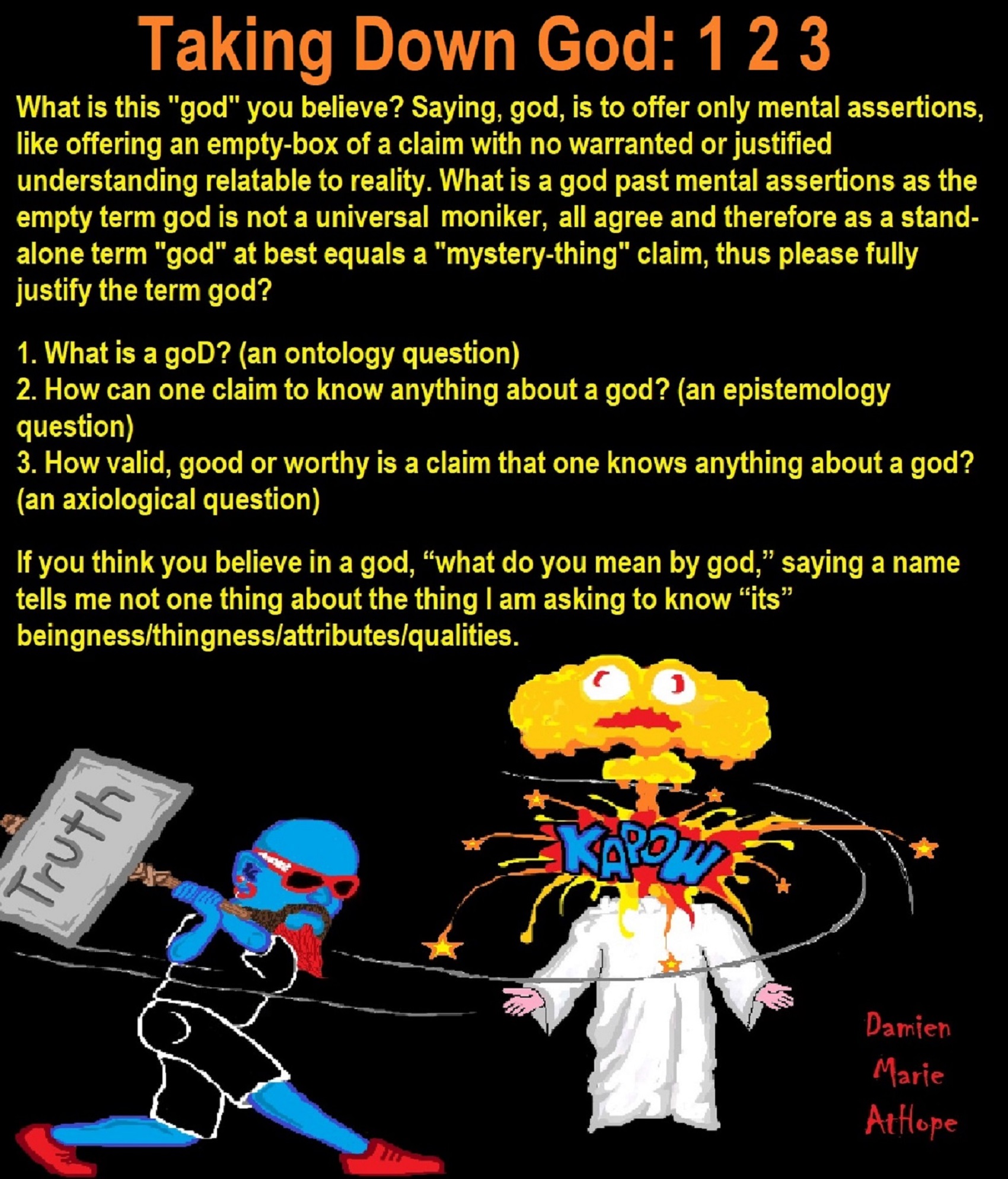


“Theists, there has to be a god, as something can not come from nothing.”
Well, thus something (unknown) happened and then there was something. This does not tell us what the something that may have been involved with something coming from nothing. A supposed first cause, thus something (unknown) happened and then there was something is not an open invitation to claim it as known, neither is it justified to call or label such an unknown as anything, especially an unsubstantiated magical thinking belief born of mythology and religious storytelling.

While hallucinogens are associated with shamanism, it is alcohol that is associated with paganism.
The Atheist-Humanist-Leftist Revolutionaries Shows in the prehistory series:
Show two: Pre-animism 300,000 years old and animism 100,000 years old: related to “Anarchism and Socialism”
Show tree: Totemism 50,000 years old: related to “Anarchism and Socialism”
Show four: Shamanism 30,000 years old: related to “Anarchism and Socialism”
Show five: Paganism 12,000 years old: related to “Anarchism and Socialism”
Show six: Emergence of hierarchy, sexism, slavery, and the new male god dominance: Paganism 7,000-5,000 years old: related to “Anarchism and Socialism” (Capitalism) (World War 0) Elite and their slaves!
Prehistory: related to “Anarchism and Socialism” the division of labor, power, rights, and recourses: VIDEO
Pre-animism 300,000 years old and animism 100,000 years old: related to “Anarchism and Socialism”: VIDEO
Totemism 50,000 years old: related to “Anarchism and Socialism”: VIDEO
Shamanism 30,000 years old: related to “Anarchism and Socialism”: VIDEO
Paganism 12,000 years old: related to “Anarchism and Socialism” (Pre-Capitalism): VIDEO
Paganism 7,000-5,000 years old: related to “Anarchism and Socialism” (Capitalism) (World War 0) Elite and their slaves: VIEDO
Paganism 5,000 years old: progressed organized religion and the state: related to “Anarchism and Socialism” (Kings and the Rise of the State): VIEDO
Paganism 4,000 years old: related to “Anarchism and Socialism” (First Moralistic gods, then the Origin time of Monotheism): VIEDO
I do not hate simply because I challenge and expose myths or lies any more than others being thought of as loving simply because of the protection and hiding from challenge their favored myths or lies.
The truth is best championed in the sunlight of challenge.
An archaeologist once said to me “Damien religion and culture are very different”
My response, So are you saying that was always that way, such as would you say Native Americans’ cultures are separate from their religions? And do you think it always was the way you believe?
I had said that religion was a cultural product. That is still how I see it and there are other archaeologists that think close to me as well. Gods too are the myths of cultures that did not understand science or the world around them, seeing magic/supernatural everywhere.
I personally think there is a goddess and not enough evidence to support a male god at Çatalhöyük but if there was both a male and female god and goddess then I know the kind of gods they were like Proto-Indo-European mythology.
This series idea was addressed in, Anarchist Teaching as Free Public Education or Free Education in the Public: VIDEO
Our 12 video series: Organized Oppression: Mesopotamian State Force and the Politics of power (9,000-4,000 years ago), is adapted from: The Complete and Concise History of the Sumerians and Early Bronze Age Mesopotamia (7000-2000 BC): https://www.youtube.com/watch?v=szFjxmY7jQA by “History with Cy“
Show #1: Mesopotamian State Force and the Politics of Power (Samarra, Halaf, Ubaid)
Show #2: Mesopotamian State Force and the Politics of Power
Show #3: Mesopotamian State Force and the Politics of Power (Uruk and the First Cities)
Show #4: Mesopotamian State Force and the Politics of Power (First Kings)
Show #5: Mesopotamian State Force and the Politics of Power (Early Dynastic Period)
Show #6: Mesopotamian State Force and the Politics of Power
Show #7: Mesopotamian State Force and the Politics of Power (Sargon and Akkadian Rule)
Show #9: Mesopotamian State Force and the Politics of Power (Gudea of Lagash and Utu-hegal)
Show #12: Mesopotamian State Force and the Politics of Power (Aftermath and Legacy of Sumer)

The “Atheist-Humanist-Leftist Revolutionaries”
Cory Johnston ☭ Ⓐ Atheist Leftist @Skepticallefty & I (Damien Marie AtHope) @AthopeMarie (my YouTube & related blog) are working jointly in atheist, antitheist, antireligionist, antifascist, anarchist, socialist, and humanist endeavors in our videos together, generally, every other Saturday.
Why Does Power Bring Responsibility?
Think, how often is it the powerless that start wars, oppress others, or commit genocide? So, I guess the question is to us all, to ask, how can power not carry responsibility in a humanity concept? I know I see the deep ethical responsibility that if there is power their must be a humanistic responsibility of ethical and empathic stewardship of that power. Will I be brave enough to be kind? Will I possess enough courage to be compassionate? Will my valor reach its height of empathy? I as everyone, earns our justified respect by our actions, that are good, ethical, just, protecting, and kind. Do I have enough self-respect to put my love for humanity’s flushing, over being brought down by some of its bad actors? May we all be the ones doing good actions in the world, to help human flourishing.
I create the world I want to live in, striving for flourishing. Which is not a place but a positive potential involvement and promotion; a life of humanist goal precision. To master oneself, also means mastering positive prosocial behaviors needed for human flourishing. I may have lost a god myth as an atheist, but I am happy to tell you, my friend, it is exactly because of that, leaving the mental terrorizer, god belief, that I truly regained my connected ethical as well as kind humanity.
Cory and I will talk about prehistory and theism, addressing the relevance to atheism, anarchism, and socialism.
At the same time as the rise of the male god, 7,000 years ago, there was also the very time there was the rise of violence, war, and clans to kingdoms, then empires, then states. It is all connected back to 7,000 years ago, and it moved across the world.
Cory Johnston: https://damienmarieathope.com/2021/04/cory-johnston-mind-of-a-skeptical-leftist/?v=32aec8db952d
The Mind of a Skeptical Leftist (YouTube)
Cory Johnston: Mind of a Skeptical Leftist @Skepticallefty
The Mind of a Skeptical Leftist By Cory Johnston: “Promoting critical thinking, social justice, and left-wing politics by covering current events and talking to a variety of people. Cory Johnston has been thoughtfully talking to people and attempting to promote critical thinking, social justice, and left-wing politics.” http://anchor.fm/skepticalleft
Cory needs our support. We rise by helping each other.
Cory Johnston ☭ Ⓐ @Skepticallefty Evidence-based atheist leftist (he/him) Producer, host, and co-host of 4 podcasts @skeptarchy @skpoliticspod and @AthopeMarie
Damien Marie AtHope (“At Hope”) Axiological Atheist, Anti-theist, Anti-religionist, Secular Humanist. Rationalist, Writer, Artist, Poet, Philosopher, Advocate, Activist, Psychology, and Armchair Archaeology/Anthropology/Historian.
Damien is interested in: Freedom, Liberty, Justice, Equality, Ethics, Humanism, Science, Atheism, Antiteism, Antireligionism, Ignosticism, Left-Libertarianism, Anarchism, Socialism, Mutualism, Axiology, Metaphysics, LGBTQI, Philosophy, Advocacy, Activism, Mental Health, Psychology, Archaeology, Social Work, Sexual Rights, Marriage Rights, Woman’s Rights, Gender Rights, Child Rights, Secular Rights, Race Equality, Ageism/Disability Equality, Etc. And a far-leftist, “Anarcho-Humanist.”
I am not a good fit in the atheist movement that is mostly pro-capitalist, I am anti-capitalist. Mostly pro-skeptic, I am a rationalist not valuing skepticism. Mostly pro-agnostic, I am anti-agnostic. Mostly limited to anti-Abrahamic religions, I am an anti-religionist.
To me, the “male god” seems to have either emerged or become prominent around 7,000 years ago, whereas the now favored monotheism “male god” is more like 4,000 years ago or so. To me, the “female goddess” seems to have either emerged or become prominent around 11,000-10,000 years ago or so, losing the majority of its once prominence around 2,000 years ago due largely to the now favored monotheism “male god” that grow in prominence after 4,000 years ago or so.
My Thought on the Evolution of Gods?
Animal protector deities from old totems/spirit animal beliefs come first to me, 13,000/12,000 years ago, then women as deities 11,000/10,000 years ago, then male gods around 7,000/8,000 years ago. Moralistic gods around 5,000/4,000 years ago, and monotheistic gods around 4,000/3,000 years ago.
To me, animal gods were likely first related to totemism animals around 13,000 to 12,000 years ago or older. Female as goddesses was next to me, 11,000 to 10,000 years ago or so with the emergence of agriculture. Then male gods come about 8,000 to 7,000 years ago with clan wars. Many monotheism-themed religions started in henotheism, emerging out of polytheism/paganism.

Damien Marie AtHope (Said as “At” “Hope”)/(Autodidact Polymath but not good at math):
Axiological Atheist, Anti-theist, Anti-religionist, Secular Humanist, Rationalist, Writer, Artist, Jeweler, Poet, “autodidact” Philosopher, schooled in Psychology, and “autodidact” Armchair Archaeology/Anthropology/Pre-Historian (Knowledgeable in the range of: 1 million to 5,000/4,000 years ago). I am an anarchist socialist politically. Reasons for or Types of Atheism
My Website, My Blog, & Short-writing or Quotes, My YouTube, Twitter: @AthopeMarie, and My Email: damien.marie.athope@gmail.com


